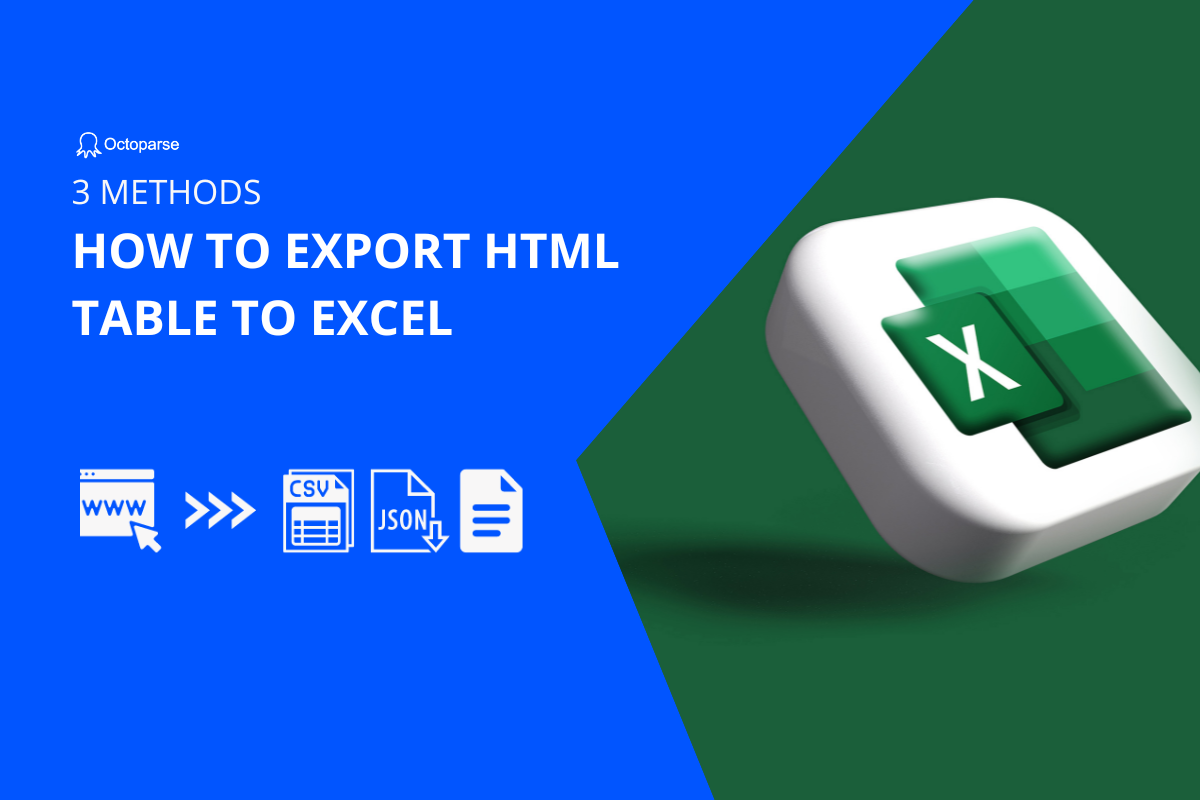
Understanding the Critical Need for Seamless Web Data Extraction
In the rapidly evolving digital landscape, transforming HTML tables into Excel spreadsheets has become more than a technical skill—it‘s a strategic necessity. As data continues to drive decision-making across industries, professionals require sophisticated techniques to extract, manipulate, and analyze web-based information efficiently.
The Web Data Challenge: Why HTML Table Export Matters
Imagine spending hours manually copying data from complex web tables, struggling with formatting, and risking human error. This scenario is all too familiar for researchers, analysts, and business professionals who rely on web-sourced information. HTML table export isn‘t just a convenience; it‘s a critical workflow optimization that can save countless hours and unlock unprecedented insights.
The Evolution of Web Data Extraction Technologies
Web scraping and data extraction have undergone remarkable transformations over the past decade. What once required intricate programming skills can now be accomplished through user-friendly tools and sophisticated algorithms. This democratization of data extraction has opened new possibilities for professionals across various domains.
Historical Context of HTML Table Extraction
The journey of HTML table export began in the early 2000s when web developers and researchers first recognized the need to automate data transfer processes. Initial methods involved complex scripting languages and manual parsing techniques. Today, we have a robust ecosystem of tools and technologies that make data extraction more accessible and efficient than ever before.
Five Comprehensive Methods for HTML Table to Excel Export
Method 1: No-Code Web Scraping with Advanced Tools
Modern web scraping platforms have revolutionized data extraction by eliminating the need for extensive programming knowledge. Tools like Octoparse, ParseHub, and Import.io provide intuitive interfaces that allow users to extract data with simple point-and-click interactions.
Key Features of No-Code Scraping Platforms
- Visual workflow creation
- Automatic data field detection
- Multiple export format support
- Cloud-based scheduling
- IP rotation and anti-blocking mechanisms
These platforms leverage machine learning algorithms to understand complex web page structures, making data extraction more intelligent and adaptable. By analyzing HTML table layouts, they can automatically identify and extract relevant information with remarkable accuracy.
Method 2: Native Excel Web Query Import
Microsoft Excel has continuously evolved to support direct web data import, providing a native solution for professionals who prefer working within spreadsheet environments. The built-in "Get Data from Web" feature allows seamless table extraction without additional software.
Step-by-Step Native Excel Import Process
- Open a new Excel workbook
- Navigate to the Data tab
- Select "From Web" option
- Enter the target webpage URL
- Choose the desired table
- Transform and load data
While convenient, this method works best with static, well-structured HTML tables and may struggle with dynamically rendered content or complex web applications.
Method 3: JavaScript-Powered HTML Table Export
For developers and technical professionals, JavaScript offers powerful capabilities in web data extraction. By leveraging libraries like SheetJS and implementing custom scripts, you can create sophisticated export mechanisms tailored to specific requirements.
function exportTableToExcel(tableId, filename = ‘exported_data.xlsx‘) {
const table = document.getElementById(tableId);
const workbook = XLSX.utils.table_to_book(table);
XLSX.writeFile(workbook, filename);
}This approach provides maximum flexibility but requires programming expertise and a deep understanding of web technologies.
Method 4: Python Web Scraping with Pandas
Python has emerged as a preferred language for data extraction and manipulation, with libraries like Pandas simplifying complex web scraping tasks. Its robust ecosystem allows professionals to handle intricate data extraction scenarios with remarkable ease.
import pandas as pd
import requests
def html_table_to_excel(url, output_file):
tables = pd.read_html(url)
selected_table = tables[0] # Choose specific table
selected_table.to_excel(output_file, index=False)Method 5: Browser Extension Solutions
Browser extensions provide quick, user-friendly alternatives for casual users and professionals seeking rapid data extraction. Extensions like Table Capture and Web Scraper offer one-click export functionalities across multiple browsers.
Advanced Considerations and Best Practices
Legal and Ethical Dimensions of Web Scraping
While powerful, web data extraction technologies must be employed responsibly. Always:
- Review website terms of service
- Respect robots.txt guidelines
- Obtain necessary permissions
- Avoid excessive server load
- Maintain ethical data usage standards
Performance Optimization Strategies
Efficient HTML table export requires strategic approaches:
- Implement intelligent caching mechanisms
- Use precise CSS or XPath selectors
- Minimize unnecessary network requests
- Handle potential parsing exceptions
- Validate extracted data systematically
Market Trends and Future Outlook
The web data extraction market is experiencing exponential growth, projected to reach [12.5%] Compound Annual Growth Rate by 2026. Emerging technologies like artificial intelligence and machine learning are poised to transform how we approach web data extraction.
Emerging Technologies
- AI-powered scraping algorithms
- Advanced machine learning extraction techniques
- Cloud-based distributed scraping infrastructure
- Real-time data validation systems
Conclusion: Empowering Data Professionals
Mastering HTML table to Excel export is no longer optional—it‘s a fundamental skill in today‘s data-driven world. By understanding diverse extraction methods, staying updated with technological advancements, and maintaining ethical standards, you can transform web data from a challenge into a strategic asset.
Your Next Steps
- Assess your specific data extraction needs
- Experiment with multiple export techniques
- Invest in continuous learning
- Stay adaptable in a rapidly evolving technological landscape
Remember, the power of data lies not just in extraction, but in how intelligently you transform raw information into meaningful insights.










